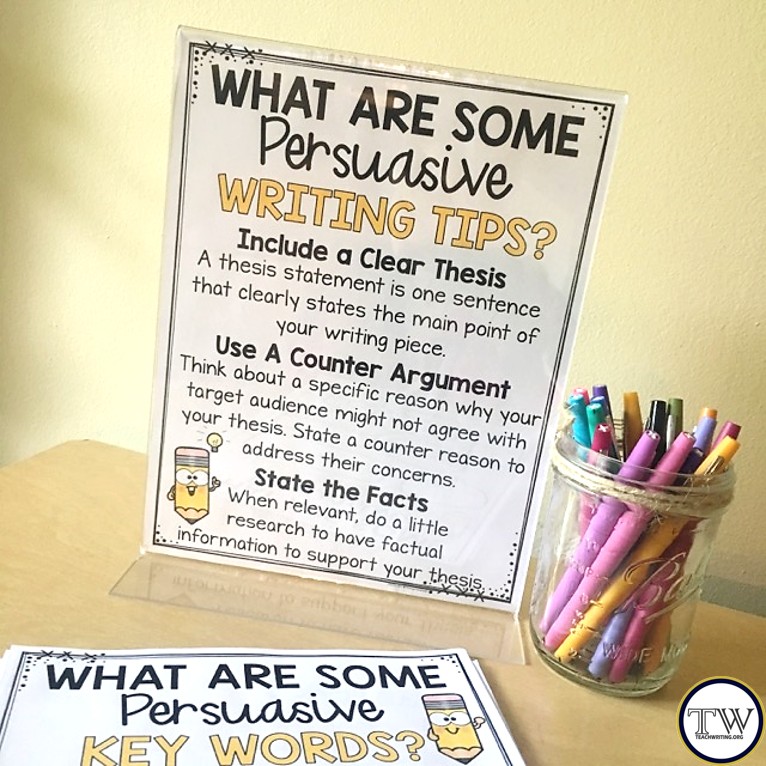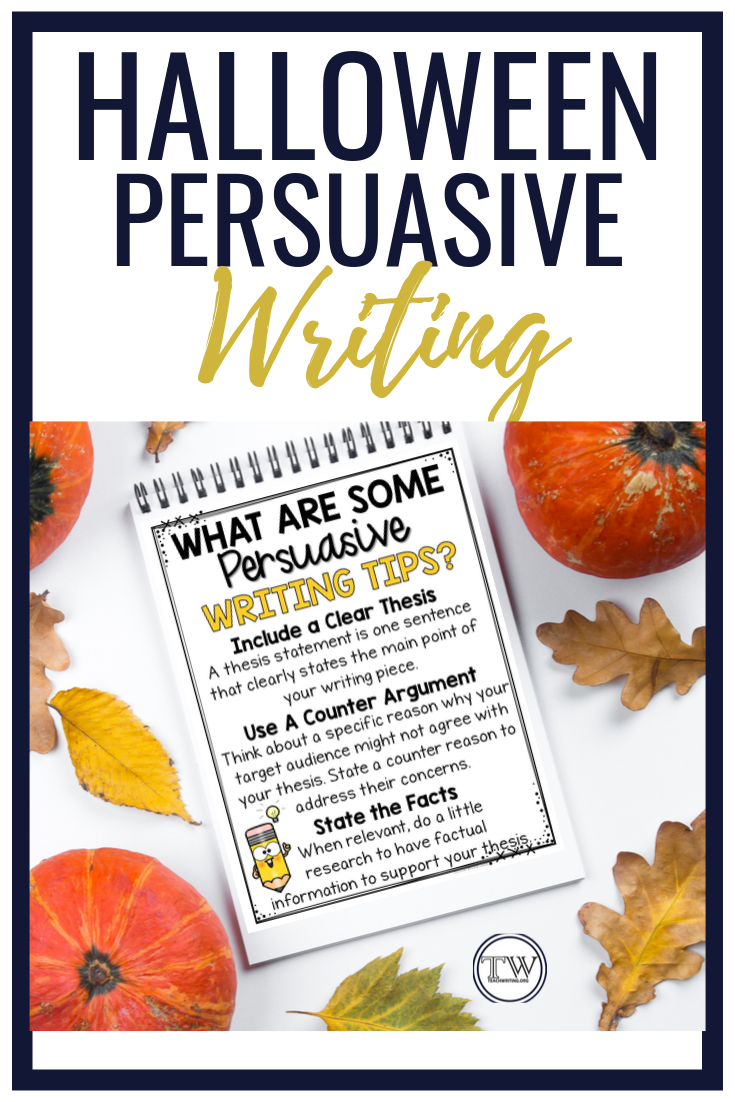Easy to Implement Tips to Teach Persuasive Writing
Engaging students during Halloween season with meaningful activities is no easy task for any elementary teacher! Students are filled with excitement of the changing season, are counting down the days to Halloween, and have costumes ideas on their mind. I love to harness all of that excitement and energy into doing creative writing projects that give students choice, a chance to be artistic, and use their imagination.
That is why I love having my students write a persuasive piece about what I should be for Halloween. It has always been my favorite writing activity of the year! The kids are always so excited to share their ideas and provide valid supporting reasons, too! It is a great topic to introduce persuasive writing to your students and get them hooked into writing this genre.
While the Halloween persuasive writing prompt is fun and creative, I stick to formal writing lessons to help students truly grasp the concept of writing persuasive pieces. Here is how I break down this genre of writing for my upper elementary students in focused lessons to help them understand the nuances specific to this writing genre. These tips are perfect for any persuasive writing lesson throughout the year, including Halloween!
What does persuasive writing sound like?
I love to share picture books and modeled writing to help students hear what persuasive writing sounds like. My favorite picture books to read aloud to use as mentor texts for this unit include:
Great Kapok Tree written by Lynn Cherry
A Fine, Fine School written by Sharon Creech
I Wanna Iguana and I Wanna New Room both written by Karen Orloff
Another great way to show and illustrate examples of persuasive writing is to use modeled writing. By annotating modeled writing together, students can see the elements of this writing genre and understand how to include these elements in their own writing pieces.
What is persuasive writing?
Students are often faced with narrative, expository, and opinion prompts. So when students find out that persuasive writing is a form of opinion writing, they can instantly connect to this genre and use what they know about opinion writing to write persuasive writing pieces. Although persuasive writing is a form of opinion writing, students must understand that the purpose of persuasive writing is to convince others to think in a certain way. Students must convince or persuade the reader through their writing, to share their point of view or thoughts.
How is persuasive writing organized?
Just like all writing forms have patterns and structures specific to its genre, so does persuasive writing. These are the three components I expect from students as they write their persuasive pieces:
Introduction: Hook your reader and state your persuasive thesis.
Support Ideas: Have 3-4 strong and relevant ideas to support your thesis.
Conclusion: Restate your thesis, include counter argument, and provide closure.
Once I have gone over the structure of persuasive writing, we revisit the picture books that were used to kick off the unit and identify these three components. As we gather them, we record them in graphic organizers. This helps students to see the evidence from the books, but also teaches them how to use the graphic organizer when they head out to write their persuasive pieces.
What are persuasive writing key words?
Students love using key words to help move their writing pieces along. Just like “how-To” pieces use sequence words to explain how to do something, persuasive writing uses key words to get points and ideas across. I share a few key words with students like: “In my opinion” and “You should”, and then we revisit the picture books to collect even more persuasive key words. We brainstorm a big list so that students have a word bank to select from when they are writing.
What are some persuasive writing tips?
Who doesn’t love a good tip when writing? I know my students love to hear me share writing tips that they can implement in their own writing. My favorite tips to share with students for persuasive writing include:
Know your audience
Include a clear thesis that states the main point of the writing
Include a counter argument that gives address concerns the reader may have
State the facts
Persuasive writing is a highly engaging form of writing for all upper elementary students, including reluctant and struggling writers. By introducing persuasive writing lessons with a topic that students are already interested in, like Halloween, students become invested in writing their best pieces. I love to introduce persuasive writing at the beginning of the year, so that we can practice it through the winter and all year long. Follow these tips and watch your students succeed!
Spotlight Resource: Persuasive Writing Halloween
Help your students master the skill of writing a persuasive writing essay to convince YOU to dress up using their costume idea. Includes everything you need to teach and enjoy persuasive writing: anchor charts, modeled writing, guiding questions, graphic organizers, rubric and power point lesson.
Don't celebrate Halloween at your school? No problem! A generic costume day prompt is also included, perfect for book day or any other costume day at your school!
You might be interested in reading:
Taking Students Through the Writing Process
Using Writing to Build Classroom Community
ABOUT THE AUTHOR:
Jeanine blogs at Think Grow Giggle and has been teaching upper elementary students for over 16 years, specifically third and fifth graders. When it comes to teaching, Jeanine includes her love of reading and writing into every lesson. She loves teaching writing and having the opportunity to bring out the author in each of her students. Jeanine holds a BA from Western Connecticut State University in American Studies and Elementary Education and an MA from Fairfield University in Educational Technology. In addition to being a certified elementary teacher, she is also a certified Reading Specialist for grades K-12. Living on the north shore of Long Island means that her free time is spent at the beach where she enjoys outdoor activities, reading, and spending time with her husband and three children.
LOVE these ideas? Pin for later!






